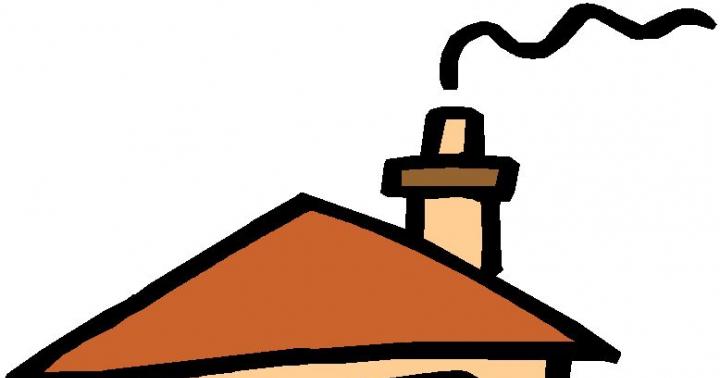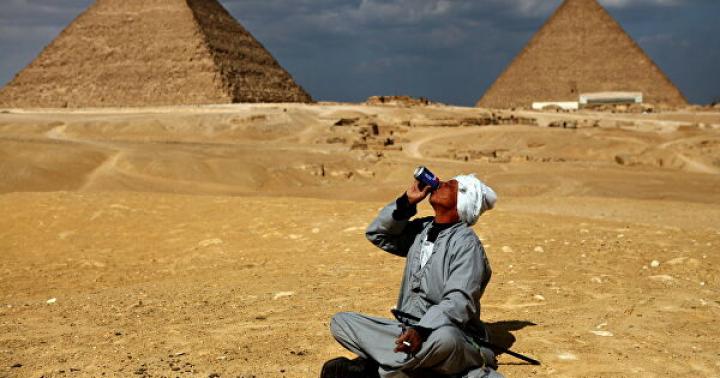MOSCOW, July 12 - RIA Novosti.Egyptologists from the AERA collaboration have found out how the passages in the Cheops pyramid were arranged and restored the security system that protected the tomb of the pharaoh from tomb robbers, reports Live Science.
"I believe that the burial room of Cheops has not yet been discovered by us, and that all three tombs we know were built in order to confuse potential thieves. The pharaoh's treasures still rest inside the pyramid," said Zahi Hawass , former Minister of Antiquities of Egypt, quoted by Live Science.
The Pyramid of Cheops, one of the seven original wonders of the world, was built in the middle of the third millennium BC by Pharaoh Khufu (Cheops), a representative of the fourth dynasty of the Old Kingdom, during which all the "great pyramids" of Ancient Egypt were built. This structure, 145 meters high and 230 meters wide and long, remains one of the tallest and largest structures ever created by mankind.
Over the past two centuries, scientists have discovered three rooms inside the pyramid, in one of which the pharaoh himself was supposedly buried, in the other his wife, and the third was considered a bait or trap for robbers. In the walls of the corridors that lead to the tomb of Khufu, unusual channels and structures were found, which today scientists consider to be elements of a "security system" that protected the pharaoh from the desecrators.
A team of archaeologists from the AERA collaboration led by Mark Lehner analyzed the structure of these channels and the blocks that were supposedly installed in them, and restored, while in the virtual world, the construction of the world's first "safe".
The pyramid of Cheops turned out to be sloped on its side, scientists sayThe famous pyramid of Cheops turned out to be not as perfect as we thought earlier - scientists found that it is slightly sloped on its side and that its eastern side is slightly shorter than the other three slopes of the "great pyramid".According to scientists, the tomb of Cheops was protected from robbers by two levels of protection. The first of them was located at the entrance to the very tomb of the pharaoh - it was closed by three monolithic stone slabs, which were raised above its entrance with the help of systems of grooves and blocks, and, probably, were held in place by some props.
The second obstacle for thieves was installed in the so-called inner sanctuary, inside which was the entrance to the tomb of Cheops. The entrance to it was closed in a similar way, with the help of stone slabs, which were lowered down through grooves and channels in the walls of the pyramid.


All these measures did not save the pyramid from being plundered - when scientists began to study it in the 19th century, the entrance to the tomb of Cheops was already open. On the other hand, according to some archaeologists, a fourth chamber may also be hiding in the pyramid, the entrance to which has not yet been found. Now archaeologists from the AERA collaboration and engineers and physicists are studying the Cheops pyramid using a "cosmic" muon scanner capable of seeing voids a meter or less.
Scientists expect that the first data on the Giza pyramids will be received in early July, when muon photographic plates accumulate a sufficient number of collisions with "cosmic" particles. This data will help us understand how true is the hypothesis of Zaha Havas, which he began to talk about three years ago.
The number of unsolved mysteries on our planet is getting smaller every year. Continuous improvement of technology, cooperation of scientists from various fields of science reveals to us the secrets and mysteries of history. But the secrets of the pyramids still defy understanding - all discoveries give scientists only tentative answers to many questions. Who built the Egyptian pyramids, what was the construction technology, is there a curse of the pharaohs - these and many other questions still remain without an exact answer.
Description of the Egyptian pyramids
Archaeologists talk about 118 pyramids in Egypt, partially or completely preserved to our time. Their age is from 4 to 10 millennia. One of them - Cheops - is the only surviving "miracle" from the "Seven Wonders of the World". The complex called "Great Pyramids of Giza", which includes and, was also considered as a participant in the "New Seven Wonders of the World" competition, but it was withdrawn from participation, since these majestic structures are actually a "wonder of the world" in the ancient list. 
These pyramids have become the most visited sightseeing sites in Egypt. They have been perfectly preserved, which cannot be said about many other structures - time has not been kind to them. Local residents also contributed to the destruction of the majestic necropolises by removing the cladding and breaking stones from the walls to build their homes. 
The Egyptian pyramids were built by the pharaohs who ruled from the XXVII century BC. e. and later. They were intended for the repose of the rulers. The huge scale of the tombs (some - up to almost 150 m) were supposed to testify to the greatness of the buried pharaohs, here were also things that the ruler loved during his lifetime and which would be useful to him in the afterlife. 
For the construction, stone blocks of various sizes were used, which were hollowed out of the rocks, and later brick became the material for the walls. Stone blocks were turned and adjusted so that a knife blade could not slip between them. The blocks were stacked on top of each other with an offset of several centimeters, which formed a stepped surface of the structure. Almost all Egyptian pyramids have a square base, the sides of which are oriented strictly to the cardinal points. 
Since the pyramids performed the same function, that is, they served as the burial place of the pharaohs, then inside the structure and decoration they are similar. The main component is the burial hall, where the ruler's sarcophagus was installed. The entrance was not arranged at ground level, but several meters higher, and was masked by facing slabs. From the entrance to the inner hall there were staircases and passages, corridors, which sometimes narrow so much that one can only walk along them squatting or crawling. 
In most necropolises, burial chambers (chambers) are located below ground level. Ventilation was carried out through narrow shafts-channels, which permeate the walls. Rock paintings and ancient religious texts are found on the walls of many pyramids - in fact, from them scientists get some information about the construction and owners of burials. 
The main mysteries of the pyramids
The list of unsolved mysteries begins with the shape of the necropolises. Why was the pyramid shape chosen, which is translated from Greek as "polyhedron"? Why were the faces located clearly on the cardinal points? How did the huge stone blocks move from the mining site and how were they raised to great heights? Were the buildings erected by aliens or people who own a magic crystal? 
Scientists even argue over the question of who built such tall monumental structures that have stood for millennia. Some believe they were built by slaves who died in the hundreds of thousands each building. However, new discoveries by archaeologists and anthropologists convince that the builders were free people who received good nutrition and medical care. They made such conclusions based on the composition of the bones, the structure of the skeletons and the cured injuries of the buried builders. 
All the deaths and deaths of people involved in the study of the Egyptian pyramids were attributed to mystical coincidences, which provoked rumors and talk about the curse of the pharaohs. There is no scientific evidence for this. Perhaps the rumors were started to scare off thieves and looters who want to find valuable things and jewelry in the graves. 
The tight deadlines for the construction of the Egyptian pyramids can be attributed to mysterious interesting facts. According to calculations, large necropolises with that level of technology should have been built in at least a century. How, for example, was the Cheops pyramid built in just 20 years? 
Great Pyramids
This is the name of the burial complex near the city of Giza, consisting of three large pyramids, a huge statue of the Sphinx and small satellite pyramids, probably intended for the wives of the rulers. 
The original height of the Cheops pyramid was 146 m, the side length was 230 m. It was built in 20 years in the XXVI century BC. e. The largest of the Egyptian landmarks has not one, but three burial halls. One is below ground level and two are above the baseline. Intertwining passageways lead to the burial chambers. On them you can go to the chamber of the pharaoh (king), to the chamber of the queen and to the lower hall. The pharaoh's chamber is a pink granite chamber with dimensions of 10x5 m. A granite sarcophagus without a lid is installed in it. None of the scientists' reports contained information about the mummies found, so it is not known whether Cheops was buried here. By the way, the mummy of Cheops was not found in other tombs either. 
It still remains a mystery whether the Cheops pyramid was used for its intended purpose, and if so, then apparently it was plundered by marauders in the past centuries. The name of the ruler, by whose order and project this tomb was built, was learned from the drawings and hieroglyphs above the burial chamber. All other Egyptian pyramids, with the exception of Djoser, have a simpler engineering structure. 
Two other necropolises in Giza, built for the heirs of Cheops, are somewhat more modest in size:

Tourists come to Giza from all over Egypt, because this city is actually a suburb of Cairo, and all transport interchanges lead to it. Travelers from Russia usually travel to Giza as part of excursion groups from Sharm el-Sheikh and Hurghada. The trip is long, 6-8 hours one way, so the tour is usually designed for 2 days. 
The great structures are accessible only during working hours, usually until 5 pm, in the month of Ramadan - until 3 pm. It is not recommended to go inside for asthmatics, as well as for people suffering from claustrophobia, nervous and cardiovascular diseases. You should definitely take drinking water and hats with you on the excursion. The excursion fee consists of several parts:
- Entrance to the complex.
- The entrance to the inside of the pyramid of Cheops or Khafre.
- Entrance to the Museum of the Solar Boat, on which the body of the pharaoh was transported across the Nile.

Against the background of the Egyptian pyramids, many people like to take photos, sitting on camels. You can bargain with camel owners.
Djoser's pyramid
The first pyramid in the world is located in Saqqara, near Memphis, the former capital of Ancient Egypt. Today, the pyramid of Djoser is not as attractive to tourists as the necropolis of Cheops, but at one time it was the largest in the country and the most complex in terms of engineering design. 
The burial complex included chapels, courtyards, and storage facilities. The six-step pyramid itself has not a square base, but a rectangular one, with sides 125x110 m. The height of the structure itself is 60 m, there are 12 burial chambers inside it, where Djoser himself and his family members were supposedly buried. The mummy of the pharaoh was not found during excavations. The entire territory of the complex of 15 hectares was surrounded by a stone wall 10 m high. At present, part of the wall and other buildings have been restored, and the pyramid, whose age is approaching 4700 years, has been preserved quite well.
1. The three most famous Egyptian pyramids are those found in the Giza Necropolis, but in fact, approximately 140 pyramids have been discovered in the area of \u200b\u200bancient Egypt.
2. The most ancient Egyptian pyramid is considered to be the Pyramid of Djoser, which was built in the Necropolis of Sakkara in the 27th century BC.
3. While the Pyramid of Djoser is considered the oldest, the Pyramid of Cheops is the largest. The original height of the pyramid was 146.5 meters, and the current height is 138.8 meters.
4. Until the Lincoln Cathedral of the Virgin Mary was built in England in 1311, the Great Pyramid of Giza held the title of the tallest man-made structure in the world. She held the record for at least three thousand years!
5. The Great Pyramid of Giza is the oldest of the Seven Wonders of the Ancient World and the last in existence.
6. Estimates of the number of workers involved in building the pyramids vary widely, however, it is likely that at least 100,000 people built them.
7. The Pyramids of Giza are guarded by the Great Sphinx, the largest monolithic sculpture in the world. It is believed that the face of the Sphinx was given a resemblance to the face of Pharaoh Khafre.
8. All Egyptian pyramids were built on the western bank of the Nile River, which is the place of sunset and was associated with the kingdom of the dead in Egyptian mythology.
9. The ancient Egyptians buried their noble citizens in pyramids with funerary gifts that ranged from household items to the most expensive items such as jewelry. They believed that the dead would use them in the afterlife.
10. The earliest known architect of the pyramids was Imhotep, an ancient Egyptian polymath, engineer and physician. He is considered the author of the first large pyramid - the Pyramid of Djoser.

11. While experts generally agree on the hypothesis that the pyramids were built from huge stones carved with copper chisels in quarries, the methods used to move and fold them are still the subject of heated debate and speculation.
12. Another, relatively obvious, is the fact that the methods used to build the pyramids have evolved over time. The pyramids of the later period are not built in the same way as the earliest pyramids.
13. After the end of the pyramid construction period in Ancient Egypt, an outbreak of pyramid construction began on the territory of modern Sudan.
14. In the 12th century, an attempt was made to destroy the pyramids of Giza. Al-Azis, the Kurdish ruler and second sultan of the Ayyubid dynasty, tried to demolish them, but he had to surrender, as the task was too large-scale. However, he managed to damage the Pyramid of Mikerin, where, due to his attempts, a vertical gaping pit remained in its northern slope.
15. The three pyramids of Giza are precisely aligned with the constellation Orion, which could well have been the builders' idea, since the stars of Orion were associated with Osiris, the god of rebirth and the underworld in ancient Egyptian mythology.

16. It is estimated that the Great Pyramid of Giza is made up of 2,300,000 stone blocks that weigh between 2 and 30 tons, and some of them even weigh more than 50 tons.
17. Initially, the pyramids were covered with finely polished white limestone facing stones. These stones reflected the light of the sun and made the pyramids shine like precious stones.
18. When the facing stones covered the pyramids, they could be seen from the mountains in Israel and maybe even from the moon.
19. Despite the wild heat around the pyramids, the temperature in the pyramids themselves actually remains relatively constant at around 20 degrees Celsius.
21. The Pyramid of Cheops was built facing north. In fact, it is the most carefully north-aligned structure in the world. Despite the fact that it was built thousands of years ago, the pyramid still faces north, with only a slight error. However, the error occurred because the N Pole is gradually shifting, which means that at one time the pyramid was directed exactly to the north.
22. On average, it took 200 years to build each pyramid. This means that often several pyramids were built at once, rather than one pyramid.
23. One of the reasons why the pyramids have survived so well is the unique cement mortar used in them. It's harder than real stone, but we still don't know how they made it.
24. Contrary to popular belief, the pyramids were most likely not built by slaves or prisoners. They were built by ordinary workers who received wages.
25. Although many people associate pyramids with hieroglyphs, no records or hieroglyphs have been found in the Great Pyramid of Giza.


